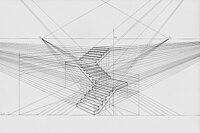
Photo from wikipedia
A unique historical architecture was created at Shuri Castle (Shuri-jo) in the Ryukyu Islands by its “Kawara” roof tiles. After the 13th and 14th centuries, Kawara tiles were introduced to… Click to show full abstract
A unique historical architecture was created at Shuri Castle (Shuri-jo) in the Ryukyu Islands by its “Kawara” roof tiles. After the 13th and 14th centuries, Kawara tiles were introduced to the Ryukyu Islands from several regions, including China, Korea, and mainland Japan, and evolved shapes and patterns that are unique to this island region. However, the transition of some internal features, such as the chemical components and microstructure, had not been analyzed. This study used a multi-faceted approach for such internal data and non-destructive quantitative methods to propose a new perspective on the evolution of historical Ryukyuan Kawara. We analyzed two styles of Ryukyuan Kawara from the 13th to 15th centuries and found that the material processing and firing conditions of the two styles were very similar, even though it had been suggested that they had different origins. A quantitative analysis of tiles from the 16th to 19th centuries revealed a transition in color tone to red, leading to the modern traditional Ryukyuan tiles; traces of changes in firing conditions were also found along with this transition. Finally, the study revealed that the evolution of Ryukyuan Kawara consisted of changed factors, e.g. surface color, and unchanged factors, e.g. paste density. Previous archaeological studies mainly focused on changing external characteristics, such as form and pattern; however, our analysis showed that the internal features changed, while the elemental composition and paste density remained constant from the appearance of the roof tiles until the 19th century. We propose that this is related to different responses of individual factors to external stressors, such as the social context, which may be common to other archaeological artifacts as well. Our study provides a new perspective on the evolution of Ryukyuan Kawara and presents a different discussion of and methods for the chronological study of material culture.
Journal Title: PLOS ONE
Year Published: 2022
Link to full text (if available)
Share on Social Media: Sign Up to like & get
recommendations!